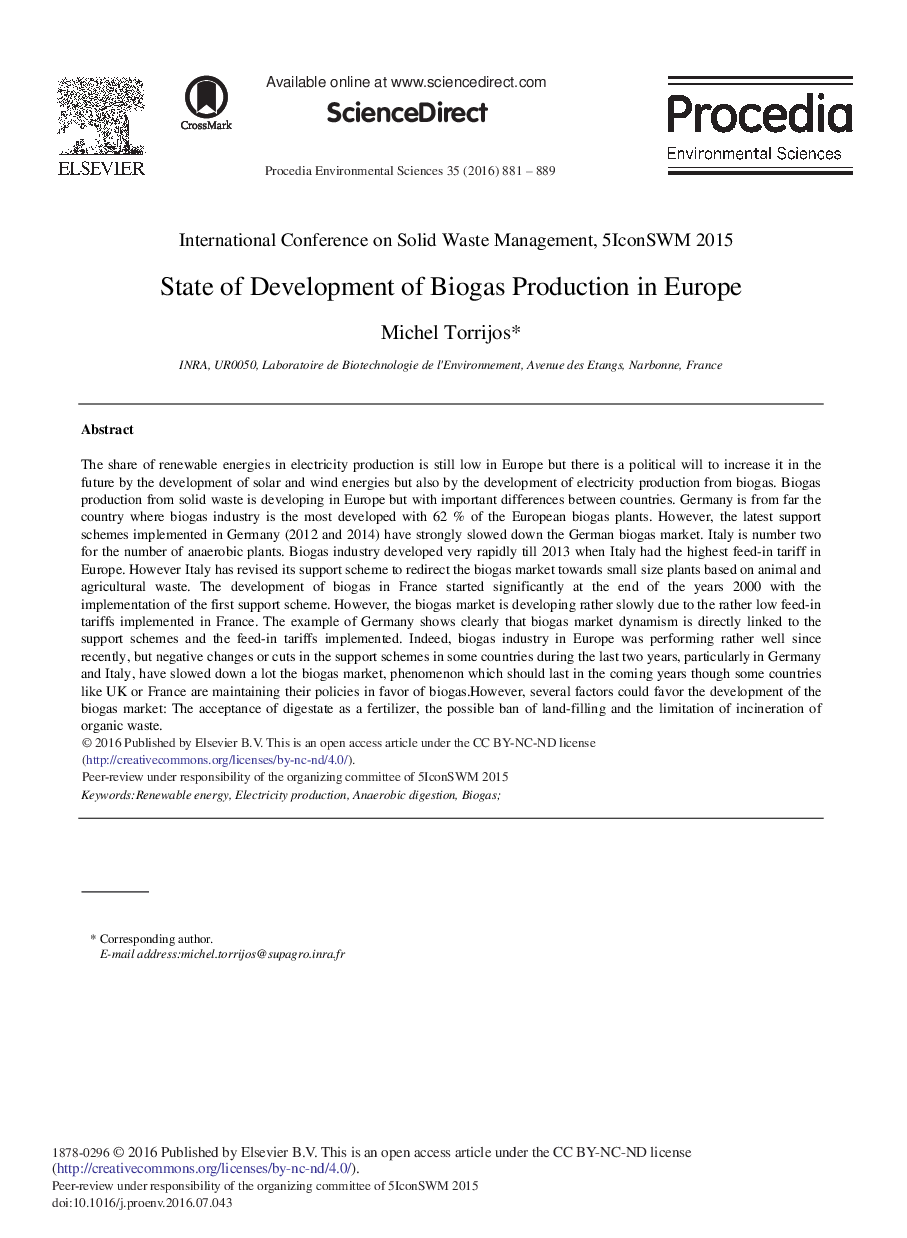| کد مقاله | کد نشریه | سال انتشار | مقاله انگلیسی | نسخه تمام متن |
|---|---|---|---|---|
| 4401447 | 1618609 | 2016 | 9 صفحه PDF | دانلود رایگان |
The share of renewable energies in electricity production is still low in Europe but there is a political will to increase it in the future by the development of solar and wind energies but also by the development of electricity production from biogas. Biogas production from solid waste is developing in Europe but with important differences between countries. Germany is from far the country where biogas industry is the most developed with 62% of the European biogas plants. However, the latest support schemes implemented in Germany (2012 and 2014) have strongly slowed down the German biogas market. Italy is number two for the number of anaerobic plants. Biogas industry developed very rapidly till 2013 when Italy had the highest feed-in tariff in Europe. However Italy has revised its support scheme to redirect the biogas market towards small size plants based on animal and agricultural waste. The development of biogas in France started significantly at the end of the years 2000 with the implementation of the first support scheme. However, the biogas market is developing rather slowly due to the rather low feed-in tariffs implemented in France. The example of Germany shows clearly that biogas market dynamism is directly linked to the support schemes and the feed-in tariffs implemented. Indeed, biogas industry in Europe was performing rather well since recently, but negative changes or cuts in the support schemes in some countries during the last two years, particularly in Germany and Italy, have slowed down a lot the biogas market, phenomenon which should last in the coming years though some countries like UK or France are maintaining their policies in favor of biogas.However, several factors could favor the development of the biogas market: The acceptance of digestate as a fertilizer, the possible ban of land-filling and the limitation of incineration of organic waste.
Journal: Procedia Environmental Sciences - Volume 35, 2016, Pages 881–889
